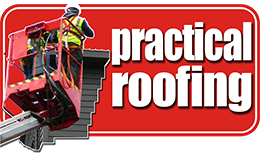










Built-Up Felt Roof Systems
by Roofing Stratford upon Avon
Roofing Stratford upon Avon
Stratford upon Avon contractors are specialists in the application of built-up felt
flat roof systems.
Built-up bitumen felt roofs are the traditional flat roof system common to many flat roofs in the United Kingdom.
What Are Felt Roofs?
Felt roofs consist of two or three layers of sheet felt materials that form a
dense impermeable barrier.
Roofing felt is a composite of an absorbent sheet of organic or synthetic fiber
that is impregnated/saturated and coated with a waterproofing agent such as tar
or asphaltic bitumen that prevents ingress of moisture.
The felt roof system is built up of multiple layers of high performance felts
and mastic asphalt over an insulated timber or concrete flat roof deck.
When applied the layers of vapour dispersion and control membranes are sealed
with graded roofing felts to guarantee a waterproof installation.
There are several techniques for applying felt - depending on the materials used, however felt is generally rolled out over the roof and bonded together by way of hot bitumen or adhesives.Materials technology and new products have modernised the range of felts many manufacturers supply, so modern man-made and composite materials felt roofs that use modified bitumen; include rubber modified elastomeric bitumen and polymer modified bitumen are now available.
Hot Works
Pour and Roll technique: where hot bitumen at 220-240°C is poured
in front of the felt as it is unrolled along the roof. The hot, sticky, viscous
bitumen is poured down the front of the roll to provide a continuous bead of
molten bitumen across the whole width of the felt. The bitumen fills voids and
when cold it provides a total contact adhesive bond to the layers and it seals
joints at the laps. Laps are never clean.
Torching-On: torch on uses specially designed felt that is heated with a gas torch. No bonding bitumen is required. The technique is generally used for small to medium sized roofs; and flat roof repair where the new material must be fused with the old to ensure total lap security or where access to the roof is difficult. The application is unsuitable for direct bonding to timber and wood based decks or lightweight polyester base materials.
Cold Works
Cold Applied Adhesive is applied evenly onto the roof surface and
the roofing felts are unrolled into position. Laps are sealed with the cold
adhesive.
Self-Adhesive Membranes: Self-adhesive membranes have undersides that include a high-tack adhesive with release paper. Once in the correct position on the roof, the release paper is peeled off, and the membrane will stick to the base. They are unsuitable for laying over uneven surfaces or in cold conditions. They require pressure contact to assist full adhesion. For the DIY market, they are used for houses and flat roof extensions, garages, garden buildings, workshops, sheds, children's playhouses, dog kennels and rabbit hutches.
Surface Protection
Built up felt roofs require a protective surface to prevent damage
by UV radiation (solar) damage, human traffic and other impact.
Because asphalt is a natural product, it has a life span and the purpose of the
finish is to delay degradation.
UV-rays in sunlight would otherwise have the capacity to oxidize the roof
surface and cause the plasticisers to leach out causing the asphalt to become
brittle and more prone to blistering and cracking, which can cause water leaks.
Top felt layer flat roof options include:
Reflective
paints which require re-application every 3 to 4 years.
Roof balconies and terraces require the covering to protect the roof membrane
from the human traffic and pressures that could puncture of crack the surface
and break the waterproof seal.
Roof covering options include:
Advantages and Benefits of Felt Roofs
Roofing Felt Standards
Various British Standards exist for bitumen felt. Roofing Stratford upon Avon
Stratford upon Avon install only roofing felt product supported by BBA (British Board
of Agreement) Certificates.
The
British Standard 747:2000 has a range of classifications for a range of felts
(pour and roll) by their base and function. Felts are colour-coded down one
edge based on the classification type.


